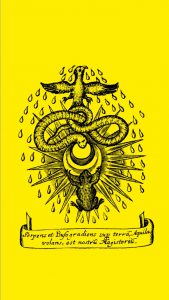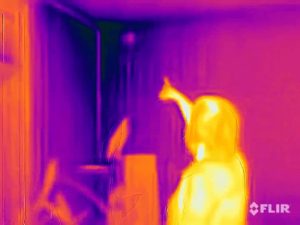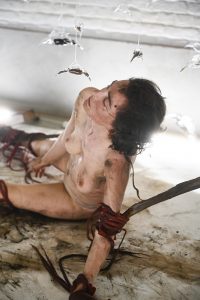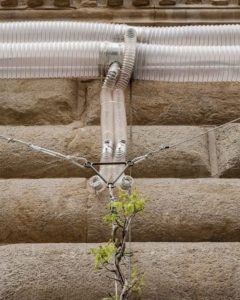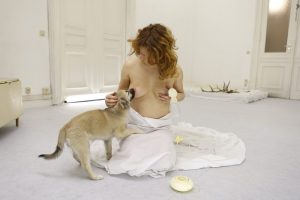Previously: Bodily Matters: Human Biomatter in Art (part 1. The blood session).
Part two of the notes i took during Bodily Matters: Human Biomatter in Art. Materials / Aesthetics / Ethics, a symposium that took place a couple of weeks ago at University College London. The impeccably curated event explored how artists use the human body not merely as the subject of their works, but also as their substance.
The second session of the opening day of the symposium was titled Blood & Bone: Post-mortem Afterlives, Trauma & Ethics. And it involved many uncomfortable trips to the autopsy room. Rough notes taken during the presentation of the papers:
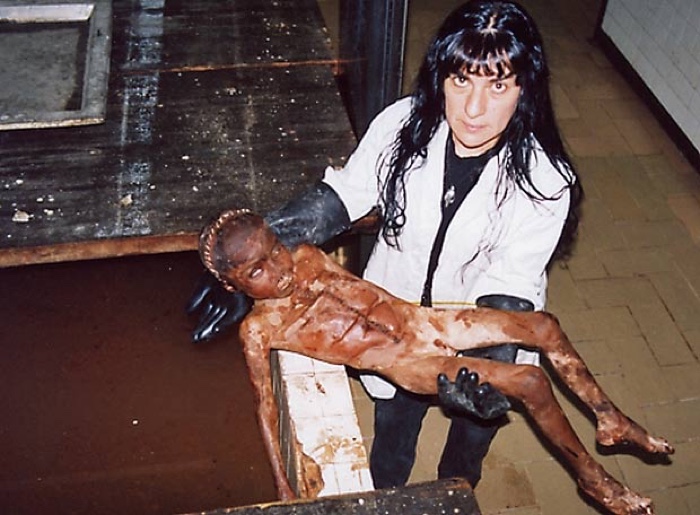
Autorretratos en la morgue (Self portraits in the morgue) (1998), photographic series, by Teresa Margolles and SEMEFO. Courtesy of Galería Labor, Mexico City, Mexico. Image via Cranium Corporation
In his paper Abstract Materialities: The Anonymous Corpse in the Work of Teresa Margolles, Edward Bacal (University of Toronto, Department of Art) explored the work of one of Mexico’s most famous contemporary artists.
“Margolles aims to open new perceptions of death and new experiences of loss within a public sphere where such relations to anonyomous bodies are typically foreclosed,” Bacal wrote in his abstract. “Meanwhile, by putting viewers in uneasy proximity to mortality, bodily abjection, and violence, Margolles illustrates how the body’s materiality (and equally, the materialization of the body) is contingent upon the bio- and thanato-political management of life and death, vis-a-vis the conditions by which bodies enter, and become legible in, the social realm.”
Margolles is not only an artist, she also has a diploma in forensic medicine and works at a morgue in Mexico City. Many of the bodies she sees there are victims of violence, drug abuse or more generally of social exclusion. The corpses often come to her unidentified and thus unclaimed.
Her works make theses anonymous dead bodies almost palpable, yet invisible. Several strategies ensure their physical presence in the exhibition space:
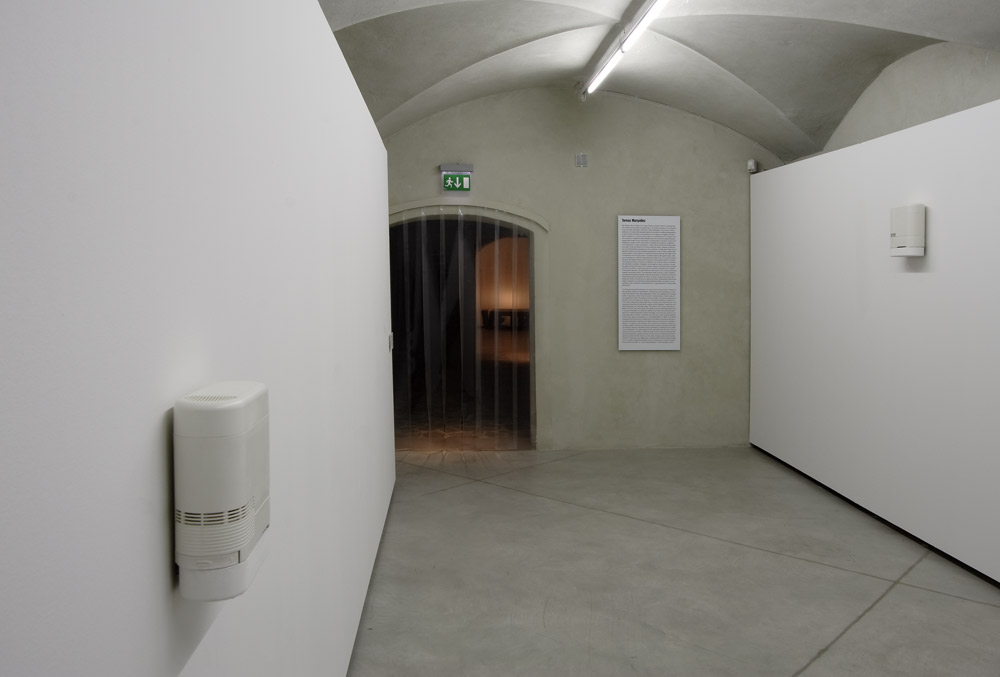
Teresa Margolles, Aire. Photo Strozzina
In the installation En el aire (In the Air) soap bubbles float around the room and burst onto the walls. The water in the soap bubbles was the one used to clean dead bodies before autopsy at a morgue in Mexico City.
Aire is a variation on the same theme, except that this time the morgue water is in the air humidifying system.
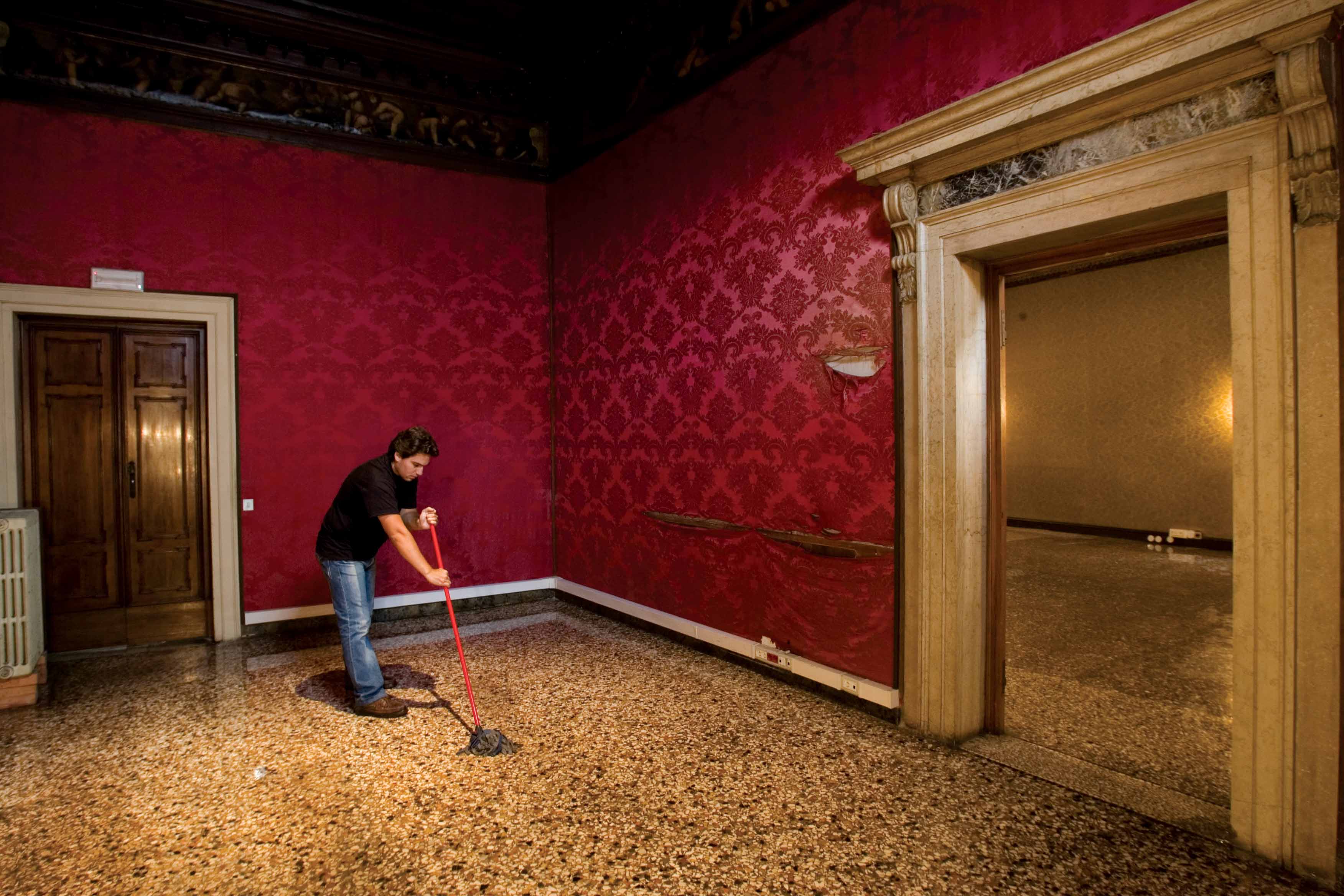
Teresa Margolles, ¿De qué otra cosa podríamos hablar? (Cleaning), 2009
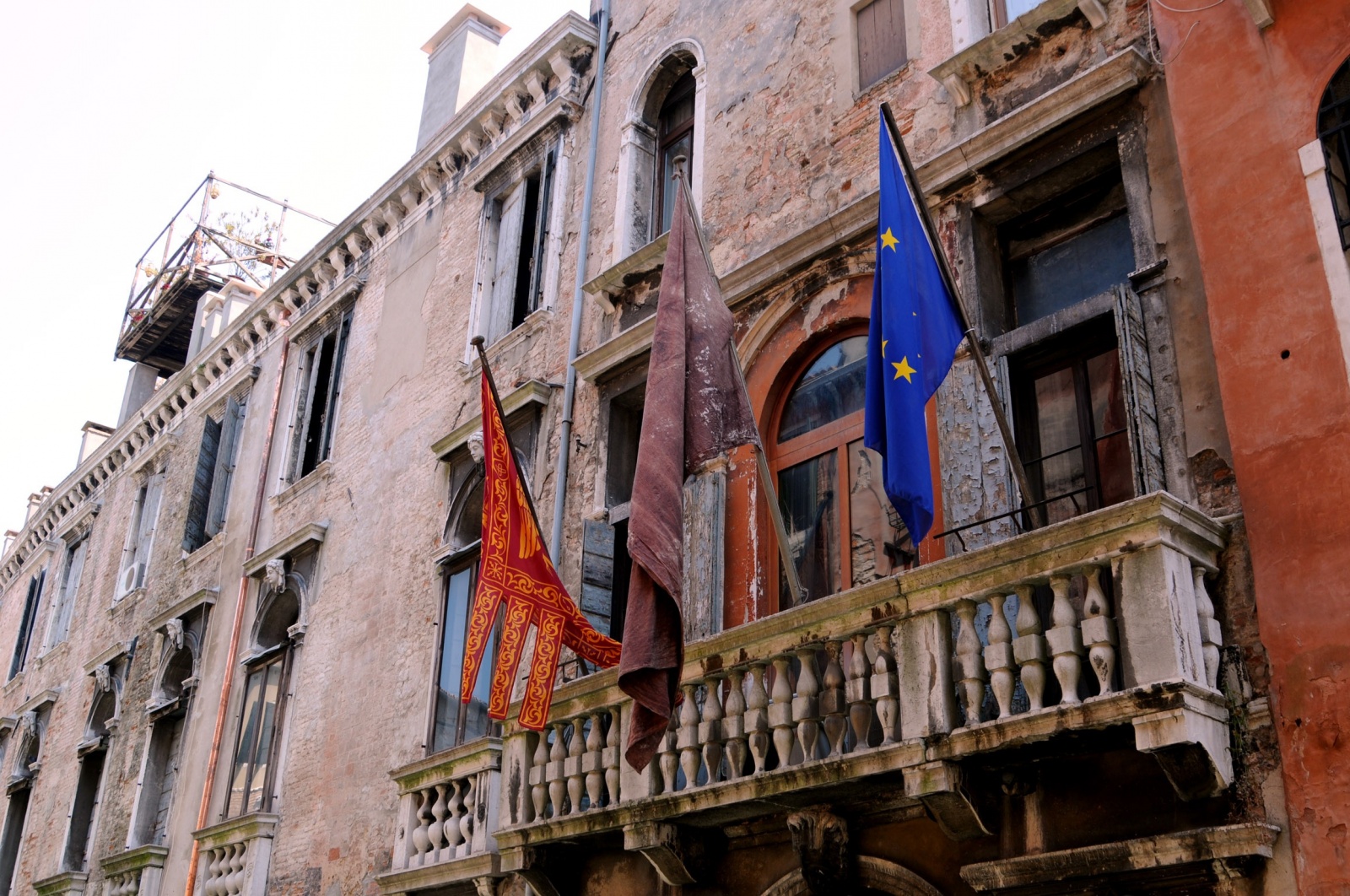
Teresa Margolles, Bandera (Flag), 2009
Margolles represented her country at the 2009 edition of the Venice Art Biennale. Titled ¿De qué otra cosa podríamos hablar? (What Else Could We Talk About?), the pavilion used blood, shattered glass and other items collected at the scene of murders in Mexico. One of the works in the pavilion consisted in cleaning the floors with a mixture of water and blood from murdered people. Meanwhile, a grubby-looking flag was hanging on the façade of the palazzo. It had been impregnated with blood collected from executions on the north border of Mexico.
What makes these works particularly upsetting is that they place the viewers in uncomfortable proximity to an ‘abjection’ that can’t be located nor identified with precision. The human body is rescued from oblivion and its presence is pervasive but only as an abstract sensation.

Théodore Géricault, Le radeau de la Méduse, 1818–1819
Bacal drew parallels between Margolles’ work and two 19th century painters who used abject body parts as symbols for barbarism, corruption and the collapse of the state.
Théodore Géricault, for example, visited the Paris morgue in preparation to the painting of The Raft of the Medusa, as one can see in his studies with limbs and raw flesh. His work was an an icon of Romanticism but also a critique of ultra-royalism and of the decline of the governing class integrity. Around the same time but in Spain, Goya’s work was depicting political violence and corruption in his country.
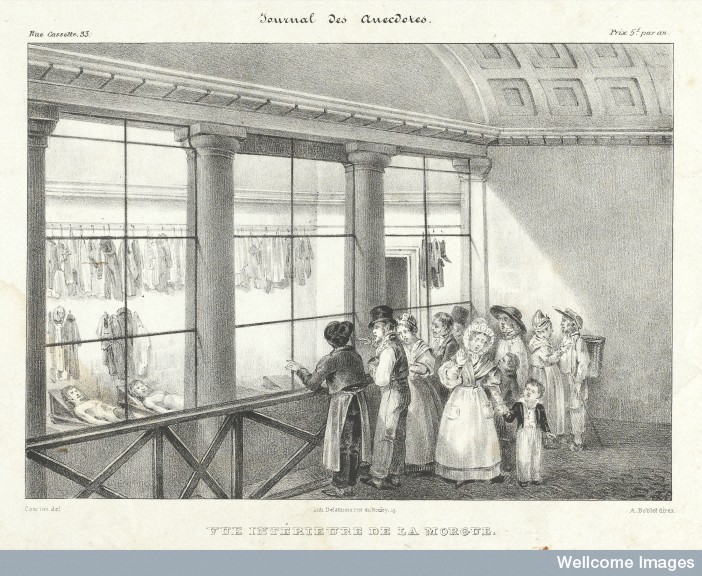
People visiting the morgue in Paris to view the cadavers. A crowd gathers to view the grisly sight of the bodies, including a mother and her young son, 1829?. Photo Wellcome
But while the Paris morgue that Géricault visited was then a site of mass entertainment, Margolles’s work does the opposite: it brings the morgue to the public.
Margolles’ works call for a recognition of the dead. In particular, the anonymous victims of violence who can’t be identified but deserve to be mourned. Their sad fate is the result of a series of socio-political conditions: poverty, state violence, gang activity, militarized war on drugs, etc. Ultimately, her works reminds us that to be a political subject means to be the subject of violence, whether it’s gun violence or guillotine.
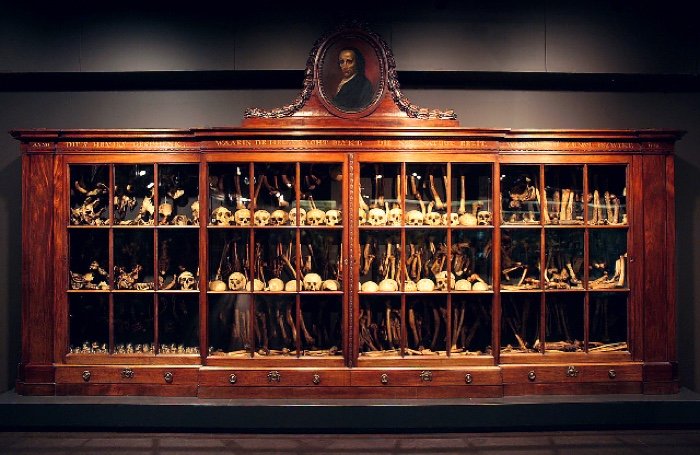
The Vrolik Musuem; Amsterdam. Photo via Morbid Anatomy
Dr. Gemma Angel (UCL Institute of Advanced Studies) was the organizer of the whole symposium. Her paper Art Imitating Death Imitating Art. Contemporary Art and the Medical Museum: Ethics, Conflict & Controversy explored the changes in perception and practices when dealing with human remains.
Whilst anatomical dissection and artistic practice have gone hand-in-hand for centuries, contemporary relationships between medical institutions and artists seeking to access their collections, such as Hirst and Anthony Noel Kelly, have been marked by conflict, controversy and a disjuncture between professional medical codes of ethics, and artistic intentions.
Both Hirst’s With Dead Head and Noel-Kelly’s Guilded Man raised ethical questions about access, ownership, treatment, display and visibility of human body parts in both the medical museum and in art practice.
The great sensibility towards the use of human remains in the UK can in part be explained by the scandal of the retention of hearts and organs from hundreds of children in Liverpool hospitals. The organs had been stripped without permission from babies who died at the hospital between 1988-1996. As a consequence of the scandal, new laws were passed that detailed how human material can be donated and displayed. Museums such as the Wellcome Collection or medical and pathological museums need to have a licence to exhibit human materials. However, collections of human remains often belong to universities where they are mostly used for teaching. Since not all universities have a public display license, access to the collections is usually restricted to the research community and medical students.
When public visits of the collections are allowed, visitors might or might not take photos of the human remains on show. It is a grey area that often depends on the decision of the museum staff. The Royal College of Surgeons has a strict no photo policy. Whereas at University College London, visitors can take photos and do what they want with the images.
Museums produce their own guidelines on how remains should be handled. But what happens when artists challenge this medical regime of what can or cannot be seen in medical collections?
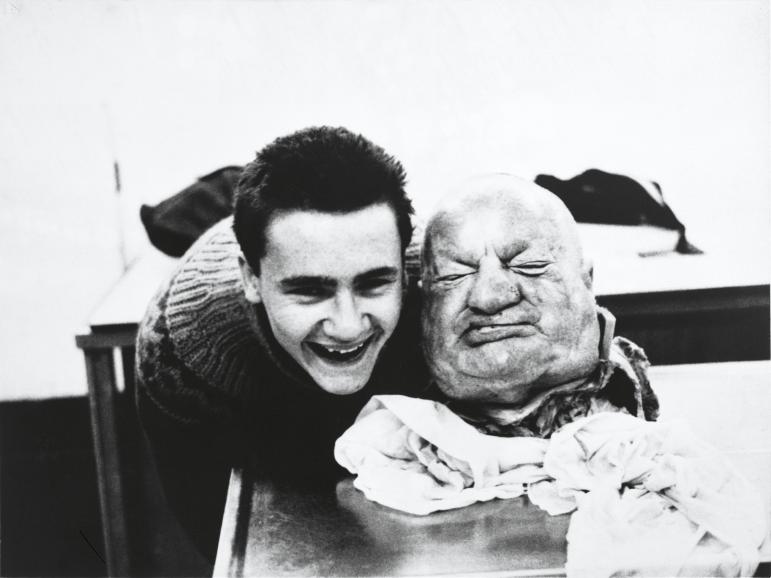
Damien Hirst, With Dead Head, 1991
In 1981, Damien Hirst was 16 and on an art school visit at the Leeds Anatomy School. Usually surgeons and medical staff cover the head of the body that they are observing and dissecting. However, a severed head had been left on a table and Hirst asked a friend to take a quick photo. The artist later explained that although he was smiling, he was actually terrified. 10 years later, the image was exhibited as art at the Galerie Emmanuel Perrotin in Paris. It was also shown in Warsaw. The photos didn’t attract much comments in either of these cities. But an exhibition of that same photo in the UK sparked a debate about the appropriateness of displaying it. The man had not given his consent to be photographed so the shot was seen as a betrayal of trust. Besides, the image could potentially cause distress to his family. The face was not identified but it was still recognizable by anyone who had known him.
What made the conversation around the photo even more complex was that Hirst was little more than a child at the time and his photo was the result of a spontaneous act.
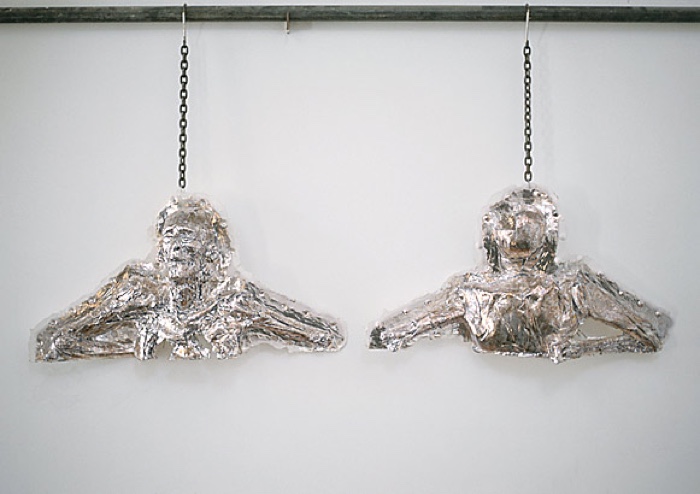
Anthony Noel-Kelly, Guilded Man, 1997
Another artist who notoriously worked with human remains without asking for consent was Anthony-Noel Kelly. In the 1990s, the artist smuggled anatomical specimens from the Royal College of Surgeons in London to his studio where he used them to make gilded plaster casts (which made the original useless for teaching.)
He was sentenced to nine months imprisonment in 1998, and the case raised issues of the ethics of art and the legal status of body parts used for medical research. Besides, his conviction for theft overturned hundreds of years of legal precedent that had ruled that a corpse was not property and couldn’t therefore be owned or stolen.
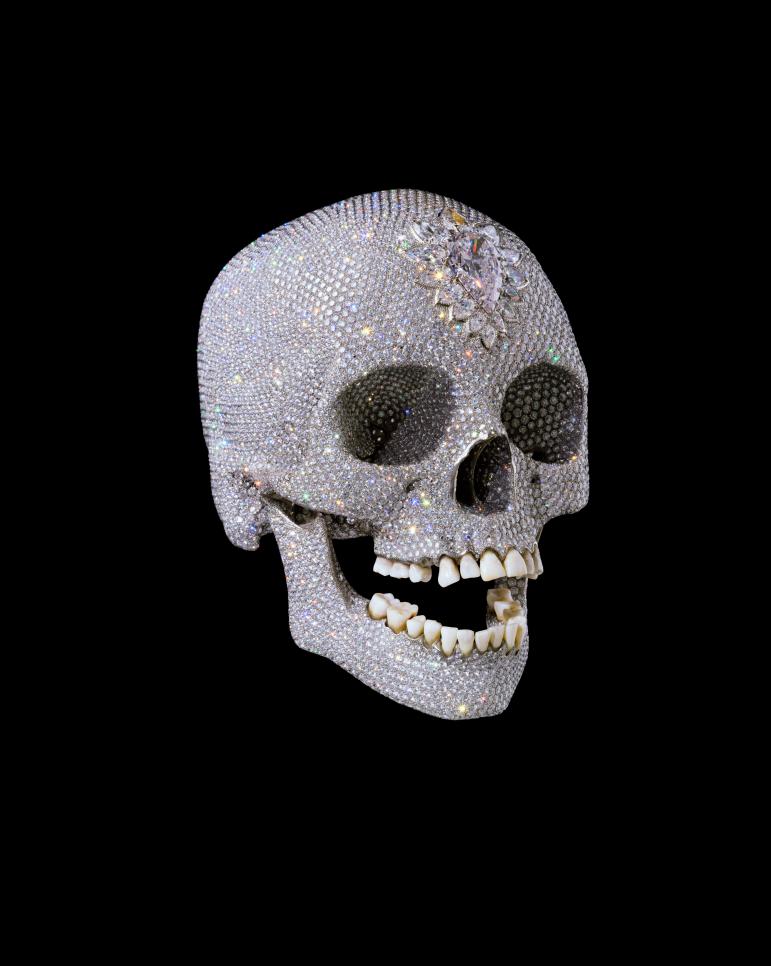
Damien Hirst, For the Love of God, 2007
Gemma Angel also noted that in his much discussed For the Love of God, Hist not only used diamonds and platinum but also human teeth.
In her paper The Phoenix effect; body art arising from the ashes, clinician & independent scholar Linda Miller investigated the production of glass works from human ashes. A now well-accepted example of this practice is the ‘cremains’ in the U.S. where people give the ashes of their loved ones to glass artists who turn them into memorials to keep at home.
The whole topic of cremation was incredibly interesting. For example, I was very surprised to learn that many cremation remains are not collected and funeral directors are not required to follow any standard regulation regarding the handling and dispersion of the ashes. Another interesting point raised by Miller is that cremation is not eco-friendly at all. Not only does it produce considerable amount of greenhouse gas emissions, cremation is also responsible for 16% of the UK’s mercury pollution (via dental fillings.) In the Lake District, the scattering of ashes of pets and relatives is now so widespread that the Lake District National Park Authority is asking people to respect the landscape and not abandon the box or urn in nature.
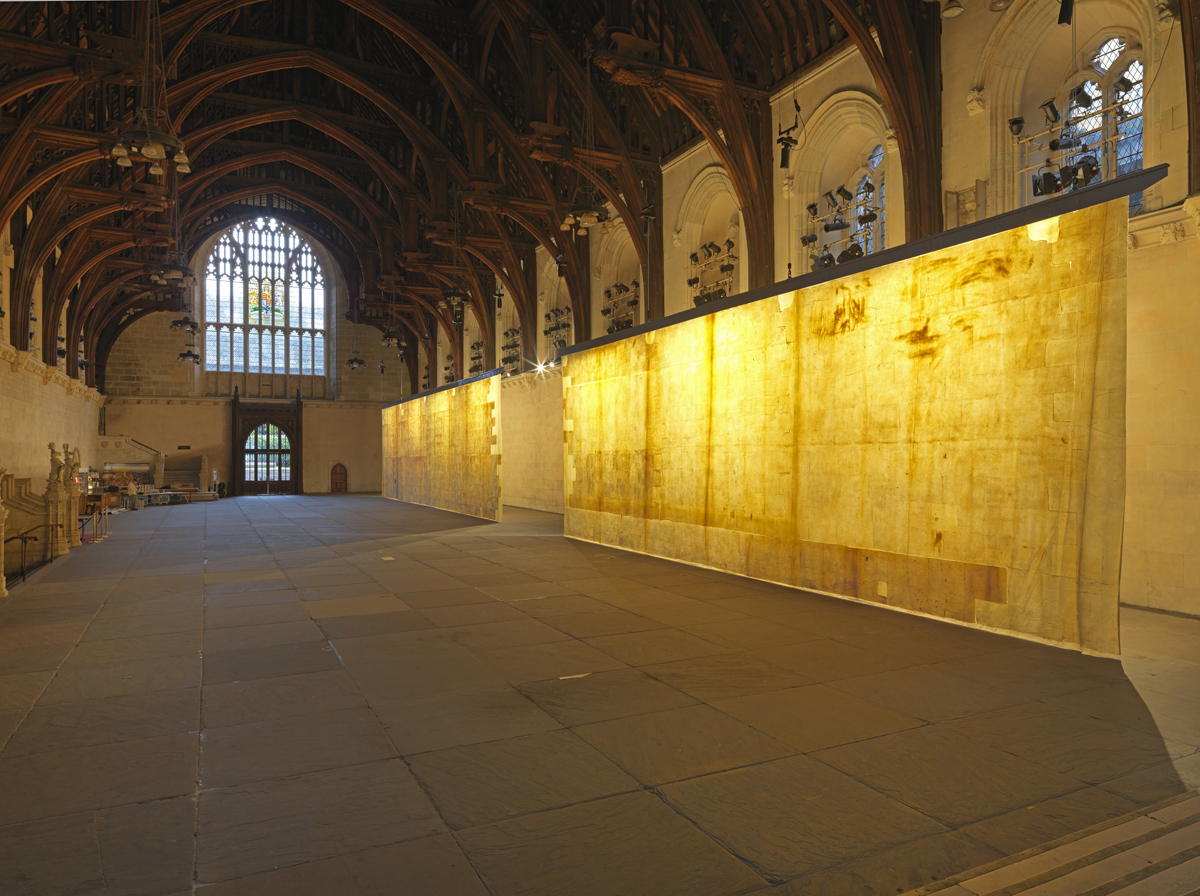
Jorge Otero-Pailos, The Ethics of Dust. Installation in Westminster hall, London. Photography: Houses of Parliament
Miller also noted the significance of the process of converting “dirty” ash into “sanitized” glass: this could be a symptom of society’s attitude to death. While the Victorians had an unambiguous relation to death and surrounded themselves with memento mori composed of human tissues, contemporary society prefers to observe a certain distance from death, the memento mori is still present but it takes the form of elegant glass objects.
A work such as Jorge Otero-Pailos‘s The Ethics of Dust (the latest piece in this series can currently be seen at Westminster Hall) similarly questions the low value we assign to dust.
Previously: Bodily Matters: Human Biomatter in Art (part 1. The blood session).

